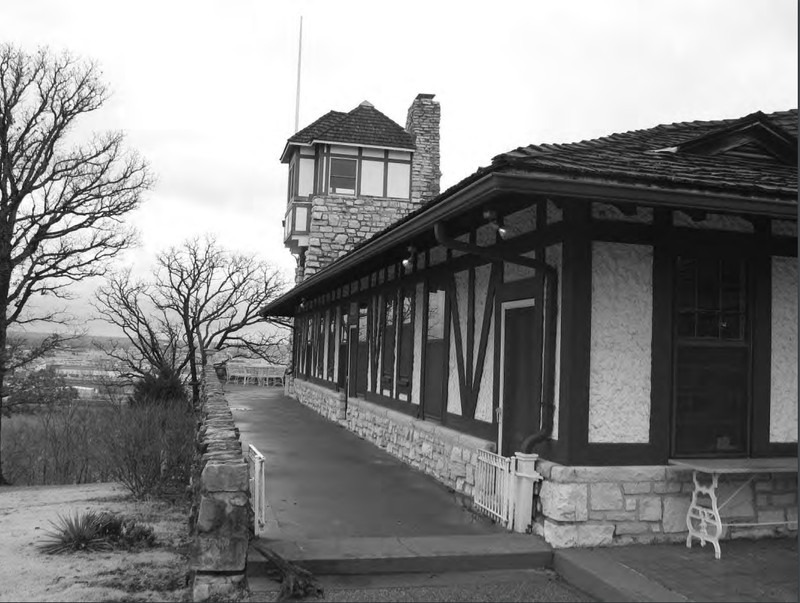Cragwold (Edwin A. Lemp Estate)
Introduction
Text-to-speech Audio
Built in 1911 for Edwin A. Lemp, the youngest member of the prominent Lemp family of St. Louis brewers, Cragworld originally encompassed approximately 200 acres. It was one of four estates built near the Meramec River between 1910 and 1920 by wealthy St. Louisans with ties to German–American and brewing families, including August Busch, Sr., of the Anheuser-Busch Brewery. The home suited Lemp, who held a deep passion for nature and exotic animals, not unlike other prominent men of the era, including Teddy Roosevelt. Cragwold later achieved a designation as a federal game farm, and Edwin Lemp became a supporter of the St. Louis Zoo, a relationship that led to agreements to transfer some animals between the zoo and this estate.
Images
Cragwold

Backstory and Context
Text-to-speech Audio
Edwin Lemp was the youngest son of the third generation of the Lemp Brewing family; Lemp Brewing Company stood as the largest and most successful brewery in the United States at the start of the twentieth century. However, Edwin worked for the family business for only a few years before his disillusionment with the world and society and his love of nature drove him to abandon his family's business and retire at age thirty-three to a quiet life in the country. His large, now-historic estate speaks to his passion for nature.
Lemp found the property for his house on his many hikes along the river and supposedly had the idea for the house design long before buying the land; the Arts & Crafts movement highly appealed to him. After graduating from college, Lemp spent several years hiking and camping along the banks of the Meramec River before finally discovering where he would eventually build Cragwold. The Lemp residence sits on a bluff overlooking the Meramec River on the rural outskirts of Kirkwood.
The vast estates established by Lemp and other inheritors of fortunes in the late nineteenth and early twentieth centuries dotted the landscape of future St. Louis suburbs like Kirkwood. The community was established in 1853 and was thirteen miles southwest of the City of St. Louis, along the newly-established Missouri Pacific Railroad line running from St. Louis to Kansas City. Because of this new rail line, Kirkwood was to become the first residential commuter suburb west of the Mississippi River. Kirkwood mirrored most early suburbs, which had railway access. Those with means could afford to take railway transportation back and forth daily to work. The suburban homes usually demonstrated the residents' financial independence, including larger yards (a better opportunity for suburbanites to enjoy nature instead of concrete and pavement throughout cities), epitomized by the Lemp Estate.
Cragworld appeared at roughly the same time as three other estates, all along the Meramec River. Edwin Lamp's older brother William built his home around the same time as Edwin on 200 acres overlooking the river. August Busch, Sr., of the Anheuser-Busch Brewery, constructed his enormous home, a French Renaissance Revival house that resembles a castle just east of the Meramec River in 1910. The last home arose in 1917 — the KahleLaumeier House.
The home design embraces the general standards of the Arts and Crafts movement, notably the Prairie Style made famous by such architects as Frank Lloyd Wright, relying on local, natural materials and possessing a close connection to the natural landscape. The style appealed to Lemp as he has a passion for nature and exotic animals. The estate includes local timber and fieldstone, and it enjoys a unique connection with nature (every room on the north, west, and south sides of the house opens onto an expansive terrace that provides views of the river valley). Several rooms opened onto a central interior room that functioned like a virtual rain forest with a lush, tropical, miniature forest complete with exotic birds.
Lemp's passion for nature occurred during the Progressive Era when many embraced a love for preserving and enjoying nature, which included establishing National Parks. Edwin Lemp spent the rest of his life at Cragwold. He also became well-known for his extensive animal collection, which started with eighteen different species of birds and grew by the 1920s to include other exotic animals such as antelope, water buffalo, llamas, emus, sacred cattle from India, Siberian yaks, peacocks, parrots, and many others. The collection allowed Cragwold to receive a designation as a Federal Game Farm sometime before 1934 (precise date unknown). Furthermore, Edwin Lemp was close friends with George Vierheller, St. Louis Zoo director, from 1922 through 1960. Lemp worked closely with Vierheller on plans to build both a new Bird House and an Antelope House. Lemp and the zoo routinely transferred animals back and forth. Lemp also enjoyed botany, which included cultivating a new tropical day-blooming water lily in 1941. The lilies grew in the cement lily ponds in front of his home. Named Nymphaeaceae, 'Edwin A. Lemp,' or Purple Star, the lilies have purple flowers with pink-tipped yellow stamens and petiole stalks.
Sources
"Arts and Crafts." Chicago Architecture Center. architecture.org. Accessed May 3, 2023. https://www.architecture.org/learn/resources/architecture-dictionary/entry/arts-and-crafts/.
Roussin, Donald and Kevin Kious. "William J. Lemp Brewing Company: A Tale of Triumph and Tragedy in St. Louis, Missouri. BeerHistory.com. Accessed May 7, 2023. https://www.beerhistory.com/library/holdings/lemp1.shtml.
Sims Taylor, Jennifer. "Registration Form: Cragwold." National Register of Historic Places. mostateparks.com. 2009. https://mostateparks.com/sites/mostateparks/files/Cragwold.pdf.
National Register of Historic Places: https://mostateparks.com/sites/mostateparks/files/Cragwold.pdf
